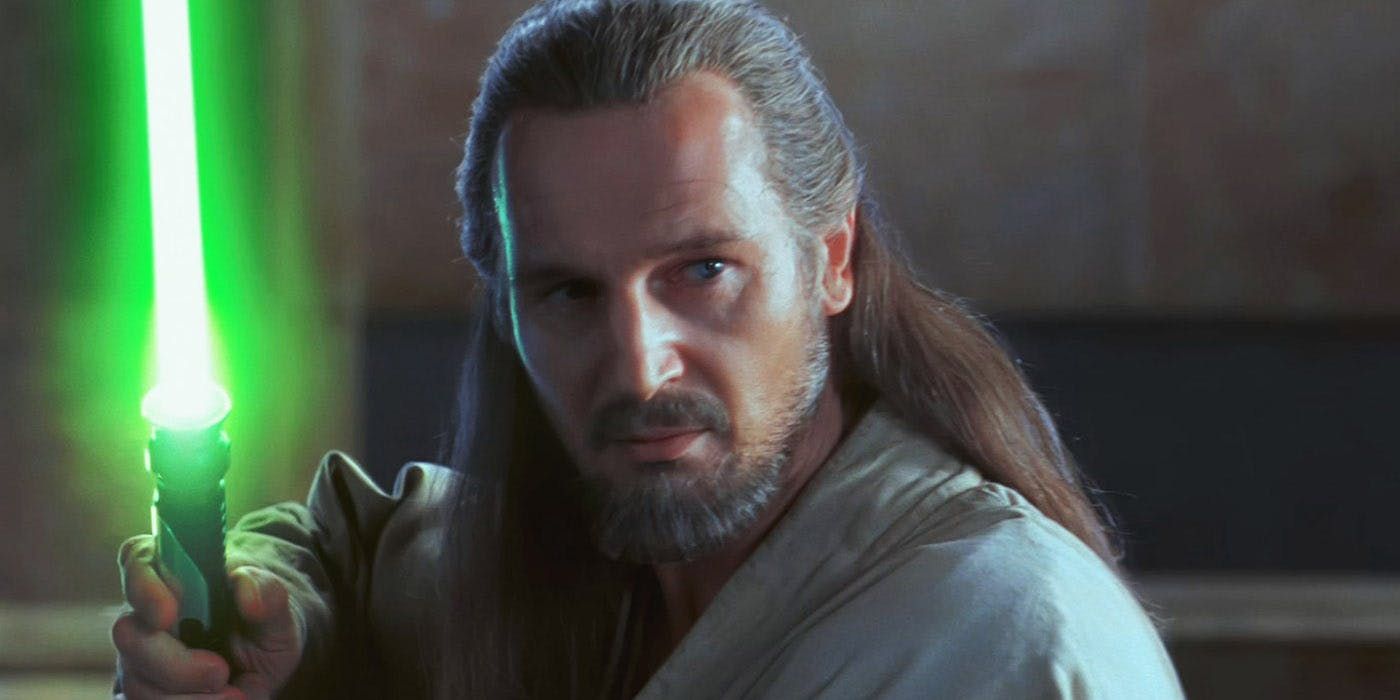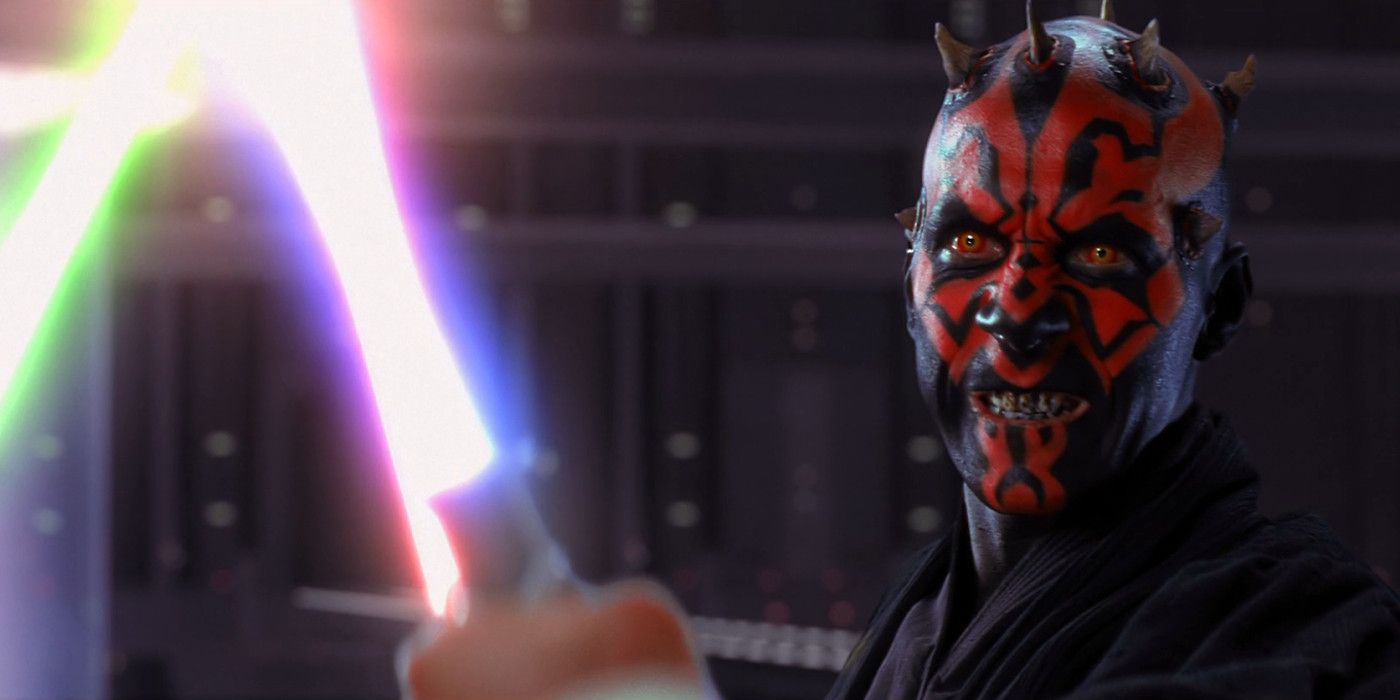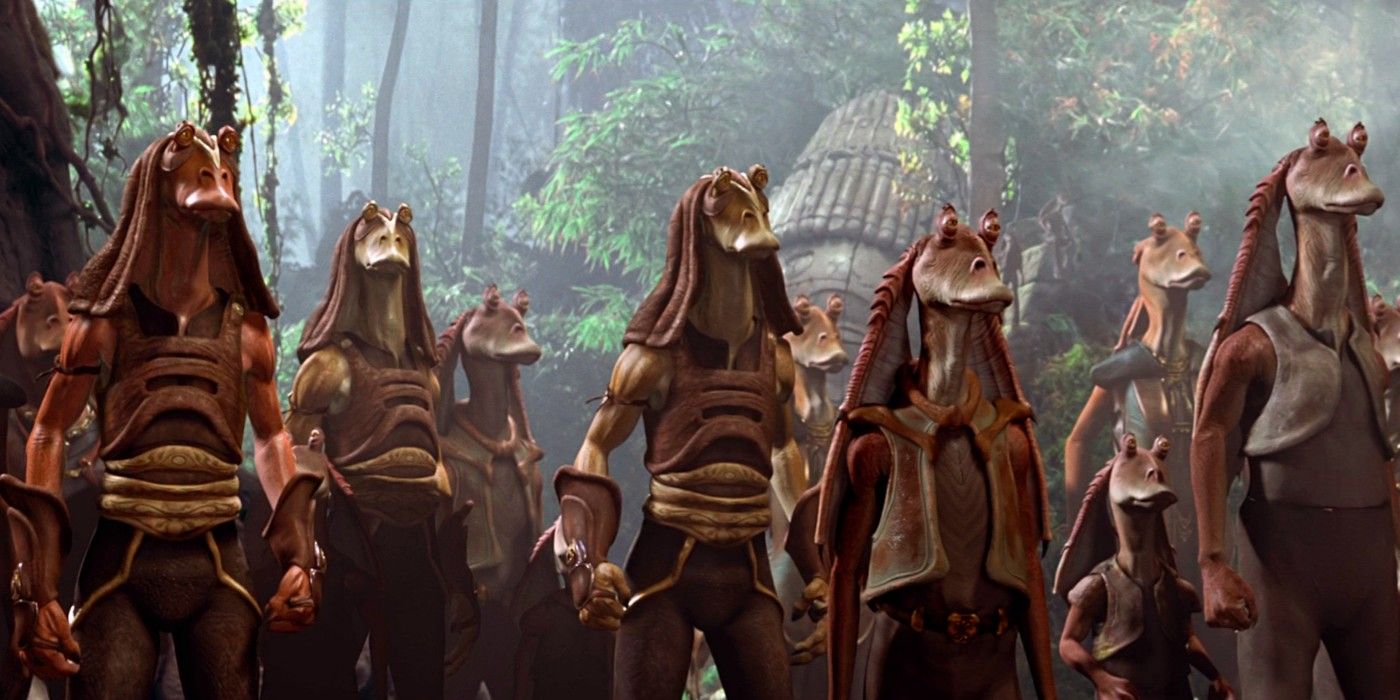
Star Wars: The Phantom Menace was bad.
There's a lot to dislike about the movie, starting from the words “trade federation” in the opening crawl. There's racist fish-men, a 10-year-old Darth Vader asking Natalie Portman if she's an angel, bantha poop and, of course, Jar Jar Binks.
Despite all those flaws, a nostalgic glow has settled on the film 20 years later. There's a lot that's happened in the last two decades to keep audiences looking for the good and inescapably unique in the film, and for the people that we were when we first tried to make heads or tails of it.

Even at the time of release, many grudgingly affirmed that The Phantom Menace contained at least one classic sequence: the Obi-Wan/Qui-Gon Jinn/Darth Maul lightsaber brawl colloquially dubbed “Duel of the Fates,” after the stirring John Williams piece that accompanied it.
“Duel of the Fates,” as music, was great new Star Wars. It was epic and primeval, as elemental as its title and as Manichean as the film series it was written for. As fitting as it was, it was also unexpected — it was a choral piece, something rare in the Star Wars universe (unless you count the Ewok’s closing “Yub Nub,” since excised from Return of the Jedi). It was, in other words, what many wanted this new trilogy to be: different, but the same.
The music has taken on its own life, becoming synonymous with awesome battles. It’s been used in the Simpsons, countless comedy videos, and to accompany basically anything anyone feels needs to be more epic. The piece was even the only classical song to appear on MTV's Total Request Live.
The acrobatic lightsaber battle that accompanied the score was dynamic in a way that no original trilogy battle had been; it was mesmerizing. Pretty much every Star Wars battle following "Duel of the Fates" owes something to Phantom Menace. Just think of the flips and force pulls in Episode II and III, and the brutal smackdowns of the sequel trilogy. Thanks to Darth Maul’s double-bladed reveal, a new era in lightsaber gimmickry was initiated, eventually inspiring Kylo Ren’s controversial hilt.
The battle also resulted in the death of the movie’s two best characters: Qui-Gon Jinn, and the perpetually cosplayable badass Darth Maul. Qui-Gon’s death was designed to mirror Obi-Wan’s in the first Star Wars, and mostly hit that poignant note. Darth Maul’s death, though seemingly definitive, followed the old showbiz maxim of “leave ‘em wanting more.” And in the subsequent years, Star Wars has delivered lots and lots of Darth Maul. Resurrected and turned into a recurring villain in the fan-favorite Clone Wars series, Darth Maul’s improbable second life was made big-screen canon in 2018’s Solo: A Star Wars Story. Although the appearance left a lot of moviegoers scratching their heads, this was a major nod to Phantom Menace in a franchise that has increasingly distanced itself from the prequel films.
Phantom Menace was also a major technological achievement for the time, with many effects still holding up artful and advanced to this day. Even the much-loathed Jar Jar Binks has gained some admiration for being cinema's first fully-realized all-CGI character — predating, for example, the more self-serious Gollum of Peter Jackson’s The Lord of the Rings. Phantom Menace also played a major in the digital cinema revolution. It was the first major movie to be projected digitally in theaters, and by the time of its sequels, Lucas was able to insist on exclusive digital distribution.

One of the reasons Episode I stands out twenty years later is there’s been nothing like it since — and what there has been has left some fans cold.
The sequel series, consisting of The Force Awakens, The Last Jedi and the upcoming Rise of Skywalker, has split fans between those who feel it is a return to form and those who feel it is a soulless corporate contrivance. Each position is, for the most part, only partly defensible. Those fans who maintain the latter have held up the prequel trilogy as more authentic, risk-taking more strange. It is true that the prequels were uniquely odd blockbusters (more on that later), but those who ignore that they were frequently awful from the point of story, character and dialogue risk sabotaging their own cause.
Fans of the original trilogy have their own problems to deal with: namely, that the “originals” are unviewable. A New Hope, The Empire Strikes Back and Return of the Jedi only exist in revamped versions from the 1990s that incorporate prequel-like effects and added scenes, almost always to the detriment of the viewing experience. The most famous of these interventions was “Han Shot First” — though not the only sin of its kind, it serves as a fine example of the whole: distracting visuals, unnecessary story changes and a weaker flow. The loss of the “original trilogy” as a sacred reference has in turn elevated the reputation of the prequels, which despite their major flaws remain, unlike the "Special Edition" versions, the unfiltered vision of person at one particular time.
In appraising Phantom Menace we should not forget its immediate sequels: the artless Attack of the Clones, and the operatic Revenge of the Sith. Though both of those movies have spawned their share of memes, gripes and appreciations, Phantom Menace stands out for its particular tone. It is the only Star Wars movie to date to feel explicitly aimed at children, featuring as it does the podracing, robot-building, force-sensitive grade-school age Anakin Skywalker and the cartoonish, farting sidekick Jar Jar Binks. From Naboo's lush greens to Tatooine's vibrant blue sky, the palette is mainly bright compared to Clones’ blue-black space noir and Sith’s hellish reds. Many of those who most appreciate Episode I 20 years later first experienced the movie as its target audience: Children.

Phantom Menace was one of the most highly-anticipated movies of its day. However, what fans received was tonally off, full of awful dialogue, bad ideas, disappointing retcons, juvenile heroes, an unclear protagonist and seemingly racist stereotypes. The colossal expectations surrounding the film meant inevitable disappointment.
It all comes back to this revealing making-of video. George Lucas exists in a total, Michael Jackson-like, isolation from dissenting viewpoints. When he does hit on something, he's enabled out of it. It’s eerie and uncanny, a far cry from the harried, frustrated visionary from The Making of Star Wars. Where Star Wars might have succeeded despite Lucas’ need for total control, and Empire and Jedi succeeded on the merits of other directors, The Phantom Menace was written and directed by Lucas, without collaborators. The loneliness and single-minded control was furthered by the green screen acting and artificial landscapes. Even the actors didn't know what they were doing.
So what fans got was weird, and frequently just plain wrong. But Lucas had accumulated enough power from the positive reaction to his original trilogy that he was able to create his vision without interference, for good or ill.
Despite its poor quality, there might not be any piece of media in all of pop culture that took up such a massive space and meant so much to people as Phantom Menace. There's a disconnect there that keeps people like me thinking about the movie, turning it over in our heads, making memes about it and trying to puzzle out how it could have been different and actually worked. More than anything, it’s this remembered shock of strangeness that makes Phantom Menace worth coming back to, decades after it first perplexed audiences.
Add Comments